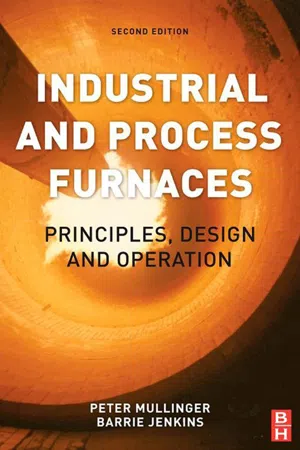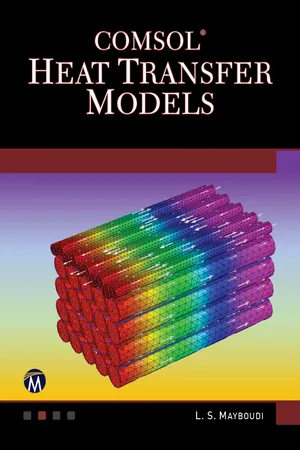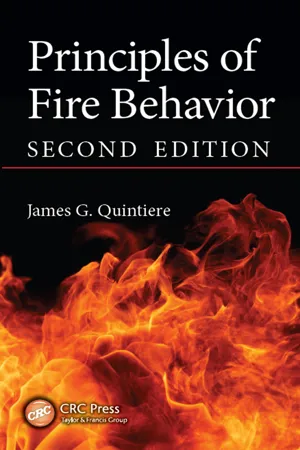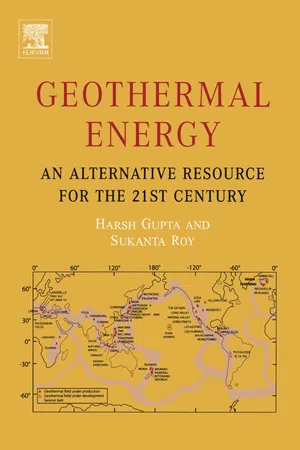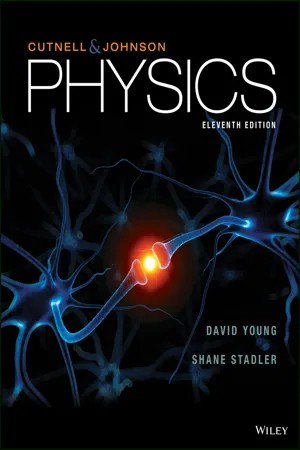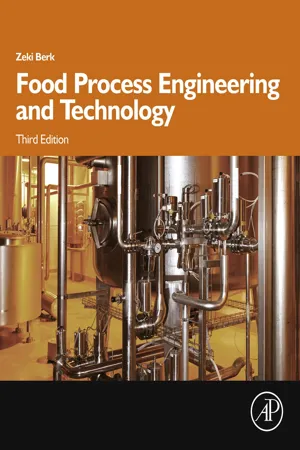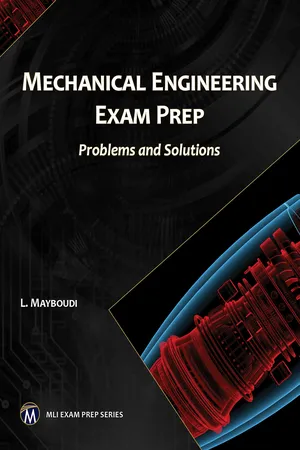Physics
Heat Transfer
Heat transfer is the movement of thermal energy from a hotter object to a cooler one. It occurs through conduction, convection, or radiation. Conduction involves direct contact between materials, convection involves the movement of fluids, and radiation involves the transfer of energy through electromagnetic waves.
Written by Perlego with AI-assistance
Related key terms
Related key terms
1 of 4
Related key terms
1 of 3
10 Key excerpts on "Heat Transfer"
- eBook - ePub
Fluid and Thermal Dynamics Answer Bank for Engineers
The Concise Guide with Formulas and Principles for Students and Professionals
- Ethirajan Rathakrishnan(Author)
- 2023(Publication Date)
- BrownWalker Press(Publisher)
Chapter 7
Heat Transfer
7.1Basic Concepts and Definitions
Heat Transfer is the science of energy in transit due to a temperature difference.In a Heat Transfer process,• Conduction is an energy transfer process from more energetic particles of a substance to the adjacent, less energetic ones as a result of the interaction between the particles.• Convection is the mode of Heat Transfer between a solid surface and the adjacent liquid or gas that is in motion.• Radiation is the Heat Transfer mode in which the energy is emitted by matter in the form of electromagnetic waves (or photons) as a result of the changes in the electronic configurations of the atoms or molecules.Any physical quantity can be characterized by dimensions . The magnitudes assigned to the dimensions are called units . The law of dimensional homogeneity states that, an analytically derived equation representing a physical phenomenon must be valid for all systems of units.System is an identified quantity of matter or an identified region in space chosen for a study. The region outside the system is called surrounding . The real or imaginary surface that separates the system from its surroundings is called the boundary . A closed system (control mass) consists of a fixed amount of mass (say a gas mass), and no mass can cross its boundary. Mass cannot cross the boundaries of a closed system, but energy can cross the boundaries. Isolated system is a special case of closed system where even energy is not allowed to cross the boundary. An open system (control volume) is a properly selected region in space, which may change its position and mass can enter and leave the region, but the size and shape of the system will remain invariant.Energy can exist in numerous forms, such as chemical, electrical, kinetic, potential, mechanical, thermal, and nuclear, and their sum constitutes the total energy of a system. The total energy of a system per unit mass is termed specific energy . The macroscopic energies are those a system possesses as a whole, with respect to some outside reference frame, such as kinetic energy and potential energy. The microscopic forms of energy are those related to the molecular structure of a system and the degree of the molecular activity, and they are independent of outside reference frames. The sum of all the microscopic forms of energy is called the internal energy of a system. The energy that a system possesses as a result of its motion relative to some reference frame is called the kinetic energy . The potential energy - eBook - ePub
Industrial and Process Furnaces
Principles, Design and Operation
- Barrie Jenkins, Peter Mullinger(Authors)
- 2013(Publication Date)
- Butterworth-Heinemann(Publisher)
The primary objective of a furnace is to transfer thermal energy to the product, thus before we analyse or design any combustion process equipment we must have a comprehensive knowledge of the fundamentals of Heat Transfer. If there is a temperature difference (i.e. a driving force) between two parts of a system, then heat will be transferred by one or more of three methods.Conduction In a solid, the flow of heat by conduction is the result of the transfer of vibrational energy from one molecule to the next, and in fluids it occurs in addition as a result of the transfer of kinetic energy. Conduction may also be created from the movement of free electrons (viz. metals).Convection Heat Transfer by convection is attributable to macroscopic motion of a fluid and is thus confined to liquids and gases. Natural convection arises from density differences caused by temperature gradients in the system. Forced convection occurs due to eddy currents in a fluid in turbulent motion.Radiation All materials radiate thermal energy in the form of electromagnetic waves. When radiation falls on a surface it may be reflected, transmitted, or absorbed. The fraction of energy that is absorbed is manifest as heat.We can write a general equation for the Heat Transfer rate between two parts of a system (net heat flux) as:(4.1)The origin of Φ and the value of n vary according to the mode of Heat TransferΦ n Conduction kA /x 1 Convection hA 1 Radiation σεA 4 During convective Heat Transfer, chemical reactions sometimes occur concurrently at the interface (surface), and in these cases the enthalpy difference is used in place of the temperature difference to account for both sensible and chemical energy components.4.1 Conduction
When considering conduction, we can rewrite equation 4.1 more correctly as(4.2)This is the classical Fourier equation, and can be used to analyse two scenarios:• steady state conduction −∂t/∂x is independent of time θ• transient conduction −∂t/∂x depends on time θ4.1.1 Steady State Conduction
Under these conditions, the temperature gradient through the system remains constant. Thus equation 4.2 - eBook - ePub
Infrared Thermal Imaging
Fundamentals, Research and Applications
- Michael Vollmer, Klaus-Peter Möllmann(Authors)
- 2017(Publication Date)
- Wiley-VCH(Publisher)
Disregarding emissivity for the moment, all objects that can be investigated have in common that they must have a different temperature than their surroundings. This means that either the objects have energy sources or sinks within them or they were heated or cooled before the observation started. In addition, during the observation, the temperature of objects may change, that is, thermal equilibrium conditions are usually never fulfilled. To interpret the results of surface temperature measurements, one must therefore know about all processes that might lead to temperature changes in objects. In this chapter, we briefly discuss the three basic Heat Transfer modes. More information can be found in textbooks (e.g., [1, 2]). Then the meaning of measured surface temperatures with regard to measurement conditions is discussed for a number of examples, that is, the problem of how the surface temperature can be used to extract meaningful information concerning objects under study.4.2 The Basic Heat Transfer Modes: Conduction, Convection, and Radiation
Temperature differences in any situation result from energy flows into a system (heating by electrical power, contact to thermal bath, absorption of radiation, for example, microwaves or solar radiation) and energy flows from a system to the surroundings (Figure 4.1 ). The former leads to heating, whereas the latter results in the cooling of an object. In thermodynamics, any kind of energy flow (also called Heat Transfer) that is due to a temperature difference between a system and its surroundings is usually called heat flow. In physics, one usually distinguishes three kinds of heat flow: conduction, convection, and radiation. As a matter of fact, the underlying physical processes for conduction and convection are very similar, so the distinction is rather artificial.4.2.1 Conduction
Conduction refers to the heat flow in a solid or fluid (liquid or gas) that is at rest (Figure 4.2 ). Conduction of heat within an object, for example, a wall of infinitesimally small thickness ds, is usually assumed to be proportional to the temperature difference dT on the two sides of the object as well as the surface area A of the object, and inversely proportional to the thickness ds - eBook - ePub
- Layla S. Mayboudi(Author)
- 2019(Publication Date)
- Mercury Learning and Information(Publisher)
Heat Transfer occurs from the point of higher temperature to that of the lower one, until the temperature equalizes among all regions and the rate of Heat Transfer approaches zero, reaching the state of thermal equilibrium. If there are also no internal forces due to thermal effects in any part of the system (mechanical equilibrium), no chemical reactions or movement of reactants (chemical equilibrium), and no temperature difference between the surroundings and system (thermal equilibrium), thermodynamic equilibrium is reached. In this condition, no spontaneous change occurs. 3.3.1 Conduction Heat Transfer Temperature difference is the driving force for the movement of heat energy; heat is transferred from the location with a higher temperature to that with a lower one. This heat flow rate (q in W = J/s) depends on the heat conduction coefficient (k in W/mK), which is the proportionality factor, area of the body normal to the heat flow (A in m 2), and temperature change (dT in K) with respect to the distance (dx in m). This is described by Fourier’s equation— q = − kA (dT / dx). Thermal conductivity depends on the material and demonstrates how fast the molecules get excited and show signs of increased activity as temperature increases. Metals have higher thermal conductivity compared to nonmetals. The closer the molecules are to one another, the easier it is for them to transfer their motion, which corresponds to thermal energy. The heat conduction transfer direction is along the direction of the temperature gradient. Temperature gradient is a vector. For three-dimensional space, each of the vector’s three components is obtained by calculating the derivative of temperature with respect to the distance along that component. Thus, a vector (dT / dx, dT / dy, dT / dz) is obtained in Cartesian coordinates. The area that is normal to the Heat Transfer gradient vector is considered when calculating the total power passing through a plane - eBook - ePub
- James G. Quintiere(Author)
- 2016(Publication Date)
- CRC Press(Publisher)
The “laws” of conduction and radiation govern Heat Transfer. These “laws” are not as perfect as the Conservation Laws of Mass and Energy; they are just very good approximations. In the early 1800s, Joseph Fourier formulated the law of heat conduction. It described the rate of heat flow through matter as directly proportional to temperature difference divided by the distance separating those temperatures in the substance. He was a scientist working in Napoleon’s army on the cooling of cannon barrels. War motivates discoveries. It took nearly 100 years later to discover the Heat Transfer relationship for radiation. Formulated in the early 1900s, Max Planck’s quantum theory led to a theoretical basis for radiation Heat Transfer. Such radiation moves at the speed of light in a vacuum and is very different from the way conduction moves.Convection is another category of Heat Transfer but it does not require a separate “law” to predict it, as it is a subset of conduction. It applies specifically to conduction in a moving fluid. Figure 3.3 illustrates these forms of Heat Transfer in a fire situation of a flame against a wall. Conduction occurs through the wall, convection occurs at the wall–flame or smoke interface, and radiation can be felt at a distance and to the wall. Also, radiation comes from the flame, smoke, and the hot wall.FIGURE 3.3 Examples of Heat Transfer in fire. 3.3.1 Conduction 3.3.1.1 SteadyThe simplest representation of the law of conduction is given as follows in steady form (unchanging with time) for the flow rate of heat through a wall. This is illustrated in Figure 3.4 . The equation is given as
whereq ˙=k A (lT 2−T 1)(3.1) k is the thermal conductivityA is the area through which the heat is transferredT2 and T1 are the respective temperatures of the wall facesl is the wall thicknessThis equation says that the rate of heat flow (e.g., kJ/s or kW) between two temperatures, T1 and T2 , in a solid is proportional to a property of the solid known as thermal conductivity (k). Also, the larger the flow area through which the heat is conducted, the greater is the flow rate, q. This is analogous to the increase in the rate of water flowing through a pipe as its diameter is increased. It should be remarked that this relationship for conduction is analogous to the flow rate of electrons (current) in a metal wire as being controlled by the voltage difference and the electrical resistance of the wire. A resistance factor is similarly used for heat conduction. The commonly used R-value for home siding insulation is the reciprocal of kA/l. This R-value is called thermal resistance as an analogy to electrical resistance whereq ˙ - eBook - ePub
Reliability Technology
Principles and Practice of Failure Prevention in Electronic Systems
- Norman Pascoe(Author)
- 2011(Publication Date)
- Wiley(Publisher)
radiation . Details relating to the application of these thermophysical properties are contained within Chapters 7, 8, 9, 10. Conversion tables for units used for heat-transfer theory are provided in Appendix 2. References [1–3] are cited for readers who wish to study Heat Transfer in much greater detail.4.2 ConductionConduction refers to energy transfer within solids due to the temperature difference between neighbouring parts of the same body. There are three thermophysical properties of practical importance to be considered when analysing the mechanism of Heat Transfer by conduction.These are:thermal conductivity; thermal resistance; thermal diffusivity.Thermal ConductivityConsider a thin element of material of thickness δx and uniform cross-sectional area A between whose faces a small temperature difference δθ is maintained as shown in Figure 4.1 .Figure 4.1 Conduction of heat through a thin element of materialIf a quantity of heat δQ passes through the element of material in time δt , the thermal conductivity k of the material is defined by the equation:(4.1)The negative sign indicates that heat flows from the higher temperature (θ) towards the lower temperature (θ − δθ ). We therefore define thermal conductivity k as the rate of flow of heat through a material per unit area, per unit temperature gradient .When δθ → 0, k approaches the thermal conductivity at a particular temperature. For the purpose of this text, the value of k will be assumed to be constant since the temperature range considered is relatively small.The quantity of heat Q passing any point in time t when the steady state has been reached is given by the equation:(4.2)Equation (4.2) is sometimes referred to as Fourier's Law and may be rewritten:(4.3)From Eq. (4.3) , thermal conductivity can, therefore, be defined as the quantity of heat Q , transmitted during time t , through a material of thickness x , in a direction normal to a surface of area A , due to a temperature difference (θ1 − θ2 ), under steady-state conditions in which the Heat Transfer is dependent only on the temperature gradient. The flat-plate geometry corresponding to Eq. (4.2) is shown in Figure 4.2 - eBook - ePub
Geothermal Energy
An Alternative Resource for the 21st Century
- Harsh K. Gupta, Sukanta Roy(Authors)
- 2006(Publication Date)
- Elsevier Science(Publisher)
Haenel et al. (1988) and others. In this section we shall discuss some basic concepts, which are useful in understanding the heat flow and temperature distribution inside the Earth.Fourier’s Equation of Heat Conduction
When a temperature gradient exists within a body, heat energy will flow from the region of high temperature to the region of low temperature. This phenomenon is known as conductive Heat Transfer, and is described by Fourier’s equation,(3.6)q →= − k∇ →T(3.6)whereq →is the flow of heat per unit area per unit time (called as heat flow), k the thermal conductivity of the body (assumed isotropic) and∇ →T is the temperature gradient. The negative sign appears because heat flows in the direction of decreasing temperature. When applied to the heat flow of the Earth, we usually consider the heat flow toward the Earth’s surface, i.e., k (∂T /∂z ), where the z-axis is taken vertically downward. (∂T /∂z ) is called the geothermal gradient, and is expressed in °C km–1 or mK m–1 . Thermal conductivity depends on the nature of the material through which the heat is flowing and is affected by physical conditions such as the temperature. It is expressed in Wm–1 K–1 . From Eq. (3.6) it follows that within an isotropic body, heat flow is a vector quantity with its direction normal to the surface of constant temperature. Heat flow is expressed in mW m–2 - eBook - ePub
- John D. Cutnell, Kenneth W. Johnson, David Young, Shane Stadler(Authors)
- 2018(Publication Date)
- Wiley(Publisher)
kgConcept Summary
- 13.1 Convection Convection is the process in which heat is carried from place to place by the bulk movement of a fluid. During natural convection, the warmer, less dense part of a fluid is pushed upward by the buoyant force provided by the surrounding cooler and denser part. Forced convection occurs when an external device, such as a fan or a pump, causes the fluid to move.
- 13.2 Conduction Conduction is the process whereby heat is transferred directly through a material, with any bulk motion of the material playing no role in the transfer. Materials that conduct heat well, such as most metals, are known as thermal conductors. Materials that conduct heat poorly, such as wood, glass, and most plastics, are referred to as thermal insulators. The heat Q conducted during a time t through a bar of length L and cross-sectional area A is given by Equation 13.1 , where(13.1)ΔTis the temperature difference between the ends of the bar and k is the thermal conductivity of the material.Q =(Lk A Δ T) t
- 13.3 RadiationRadiation is the process in which energy is transferred by means of electromagnetic waves. All objects, regardless of their temperature, simultaneously absorb and emit electromagnetic waves. Objects that are good absorbers of radiant energy are also good emitters, and objects that are poor absorbers are also poor emitters. An object that absorbs all the radiation incident upon it is called a perfect blackbody. A perfect blackbody, being a perfect absorber, is also a perfect emitter.
- eBook - ePub
- Zeki Berk(Author)
- 2018(Publication Date)
- Academic Press(Publisher)
Chapter 3Heat and mass transfer, basic principles
Abstract
Transport of heat and material occurs in every process. Heat Transfer and mass transfer are closely related and obey the same type of physical laws: Fourier's law for heat and Fick's law for mass. Heat is transferred by conduction, convection, and radiation. In the absence of agitation, heat is transferred by conduction, and mass by molecular diffusion. Thermal conductivity and molecular diffusivity are properties of the material. The laws of steady- and unsteady-state transfer are developed and illustrated with the help of typical examples.Heat exchangers are extensively used in industry for the interchange of heat between fluids. The different types of heat exchangers are described and their specific characteristics are analyzed. A section each is devoted to microwave and ohmic heating.Keywords
Fourier's and Fick's laws; Conduction; Thermal conductivity; Molecular diffusivity; Convection; Boundary layer; Dimensionless groups; Interphase mass transport; Unsteady-state transport; Radiation; Heat exchangers; Fouling; RF and microwave heating; Ohmic heating3.1 Introduction
Most food processes, such as cooking, pasteurization, sterilization, drying, evaporation, distillation, chilling, freezing, etc. involve some sort of Heat Transfer. Important industrial processes such as membrane separation, drying, salting, candying, humidification, adsorption, extraction, etc. involve exchange of materials between different parts (phases) of the system, often combined with heating or cooling. Transport of moisture and oxygen through the package often determines the shelf life of the product within. Our chemical senses (taste, odor) can function only if molecules of the taste and odor components can be transported to the sensing bodies. Most important, life itself depends on the exchange of material through biological membranes.Heat Transfer and mass transfer are based on essentially similar physical principles. Both processes obey laws that are, in principle, identical. Therefore, the basic principles of heat and mass transfer will be described together while their applications will be treated separately. - eBook - ePub
MLI Exam Prep Series
Problems and Solutions
- Layla S. Mayboudi, S. Musa, PhD(Authors)
- 2021(Publication Date)
- Mercury Learning and Information(Publisher)
7HEAT TRANSFER
- The main modes of Heat Transfer are: (a) conduction, convection, and radiation (b) convection and electromagnetism (c) dynamism and electromagnetism (d) conduction and convection
- Conduction Heat Transfer happens by means of: (a) electromagnetic waves (b) contact between surfaces (c) currents in a fluid (d) all of the above
- Convection Heat Transfer happens by means of: (a) electromagnetic waves (b) contact between surfaces (c) currents in a fluid (d) all of the above
- Radiation Heat Transfer happens by means of: (a) electromagnetic waves (b) contact between surfaces (c) currents in a fluid (d) all of the above
- If A is area, e is emissivity, and s is the Stefan-Boltzmann constant, Stefan-Boltzmann’s law states that Q = σεAT4 Q is:(a) light intensity emitted by the body (b) irradiation from a body (c) power radiated from a black body (d) reflected energy from a black body
- The convective Heat Transfer coefficient relates: (a) heat capacity to temperature variation (b) temperature to Heat Transfer flux (c) heat capacity to cross-sectional area variation (d) the difference between fluid and solid object temperature variations to Heat Transfer flux rate
- A black body with a rough surface absorbs heat . . . the one with a smooth surface:
Index pages curate the most relevant extracts from our library of academic textbooks. They’ve been created using an in-house natural language model (NLM), each adding context and meaning to key research topics.
Explore more topic indexes
Explore more topic indexes
1 of 6
Explore more topic indexes
1 of 4

